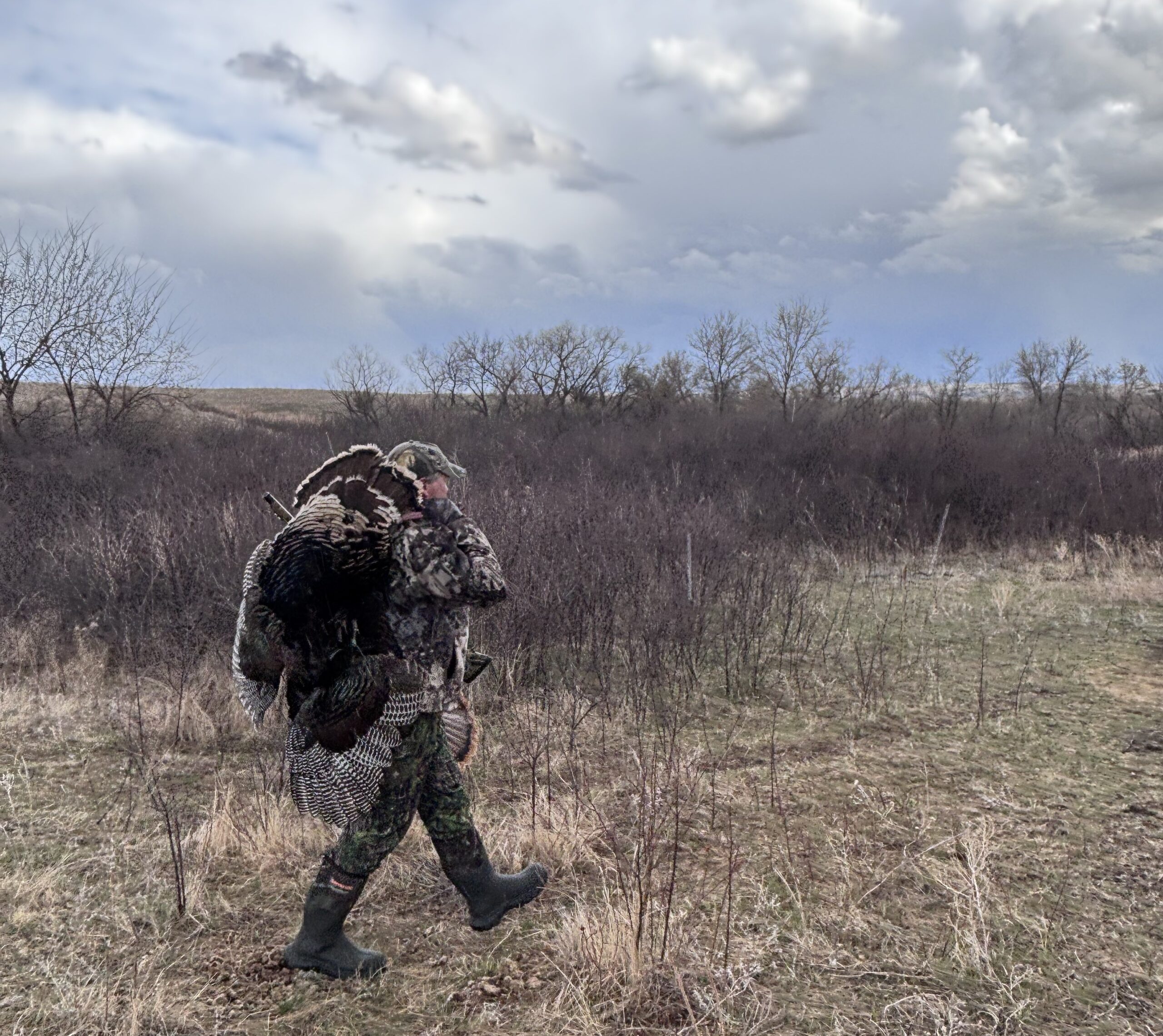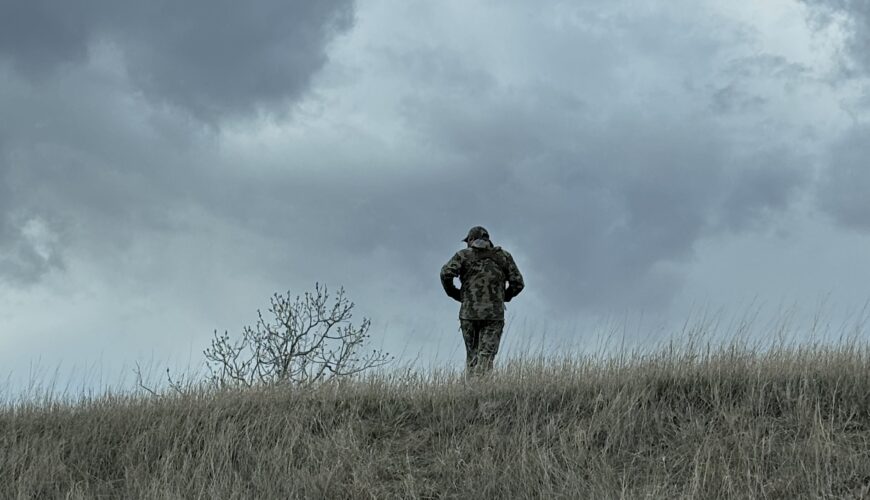Tactics
Trail Camera Strategies for Whitetails
October 30, 2025 •Doug Howlett
DST Ends November 2, 2025. The iSportsman system may experience technical difficulties at this time. View system updates here.
May 9, 2025
Rain slapping your hat brim. Wind twisting trees like a scene from The Wizard of Oz. It’s the kind of morning where most turkey hunters crawl back under the covers and hope the weather clears by tomorrow.
Let ‘em.
Because while the parking lots are empty and the gobblers seem tight-lipped, there’s one truth about turkeys that stays rock solid: they’re still out there. They’re still moving, feeding, breeding—doing all the things they do on bluebird mornings, just in different places and in different ways. And if you’re smart enough to hunt the storm instead of hiding from it, you can have one of your best days of the season. At the very least, you might finally have the woods to yourself for a change.
When the woods turn into a sponge, turkeys shift to open ground. They’re not just looking for worms—though that’s part of it. They want to see. In a dark, dripping forest full of wet branches and sketchy movement, their biggest defense—those freakishly sharp eyes—don’t work as well. Out in a green field, they’ve got 360-degree visibility and zero surprises. You’ll often catch hens dragging gobblers out to pasture just as the rain starts to ease. Be there before they show up. If the rain’s heavy, don’t call. Just sit tight on the field edge and glass. When the skies lighten, toss a few soft yelps or use a hen decoy right on the fringe. Rainy day birds can commit fast once the storm subsides.
That beautiful slate call you love? Useless once it gets soaked. Box calls aren’t much better in real downpours unless they’re chalked with waterproof compound. The only call that won’t fail you in a storm is a diaphragm—so make sure you’ve got a couple and know how to run them. If you insist on friction, carry a striker and slate combo that’s made for moisture or a box call made for the same elements—there are good ones out there with textured surfaces that’ll still scream when soaked. Even if your call’s working, understand that rain and wind muffle sound. What seems loud to you might barely carry to the next ridge. When the wind’s up, break out the box call or gobble tube to get more volume, hence more reach.
Gusty winds put turkeys on edge. Leaves shake, limbs creak and predators can get close undetected. So ,birds find the calmest place they can—usually the leeward side of hills, protected valleys or low pockets of land or off to the side of dense stands of pine. These “wind breaks” are the spots you want to be in. Even when gobblers aren’t gobbling, they’ll drift through these calmer zones to scratch, loaf and look for hens. Skip the ridgetops and wide-open hardwoods when the wind’s blowing 20+ mph. Instead, hike low and use your eyes to keep alert for roaming or loafing birds.
You know how we just said birds hit the fields for better vision? That works both ways. When you can’t be heard over the wind or rain, be seen. A hen decoy staked low and in a visible spot—think short grass or bare dirt edge—can draw a gobbler that couldn’t hear your last 10 yelps. Midday toms may especially cruise through, spot your setup and break for it without making a sound. Just make sure your decoy is staked deep enough not to go airborne. Use sticks stuck in the ground and jutting up alongside the tail to keep it from spinning like a weather vane. A flopping hen in 30 mph wind looks more like a UFO than a turkey.

Wind? Rain? No problem. The turkeys are still there, which means you should be too. Doug Howlett Photo
Bad weather hunts are about putting in work. A light rain might have birds on the move, but they’re not necessarily vocal. That means your ears won’t help much. You’ve gotta walk. Still-hunt with purpose—slow steps, soft yelps, eyes constantly scanning. Every few hundred yards, stop and call. If you do get a gobble, drop to your butt and set up. Birds in weather rarely gobble more than once, but when they do, it’s real. Scan fields from the cover of the forest using a set of binoculars. Find birds in the open feeding along an edge, use the cover to get ahead of them and simply set up and wait. Don’t call. Just wait. This is not the time to act like a calling contestant. It’s best to go audibly incognito on this one and just let the birds do their thing right into shotgun range.
Want the hottest action of a rainy day? Be sitting in the right place when the storm breaks. As soon as the clouds lift or the wind dies down, gobblers may light up. They’ve been sitting tight and frustrated just like you, and when the weather breaks, they’re ready to strut, gobble and look for hens. Scout the radar. If the weather is clearing between noon and two, plan to be on the edge of a known strut zone or field just before that. You’ll often get a first gobble out of nowhere—and it’s usually a bird that’s ready to die.
Remember, turkeys don’t stop being turkeys when the weather goes sideways—they just get harder to kill. And that’s the kind of challenge that separates turkey hunters from turkey killers. So, throw on the rain gear. Slip a diaphragm in your mouth like it’s a ZYN. Hike into the wind and hunt like you’ve got nothing to lose. It could be your best hunt of the season.
